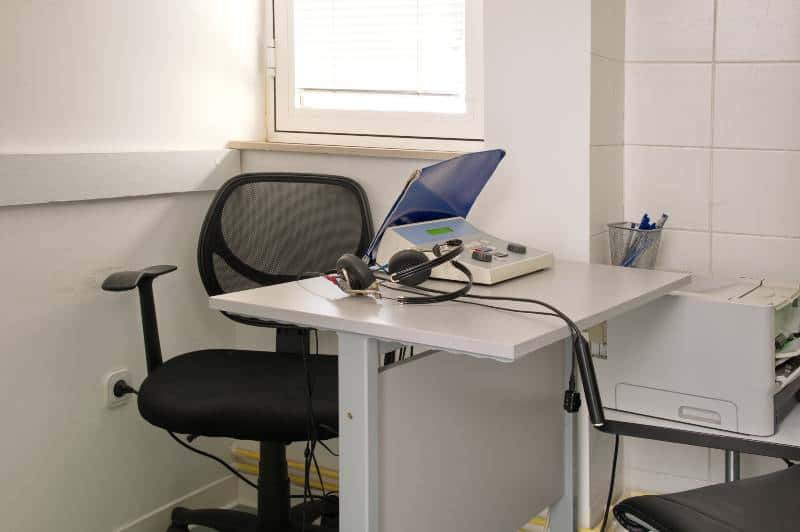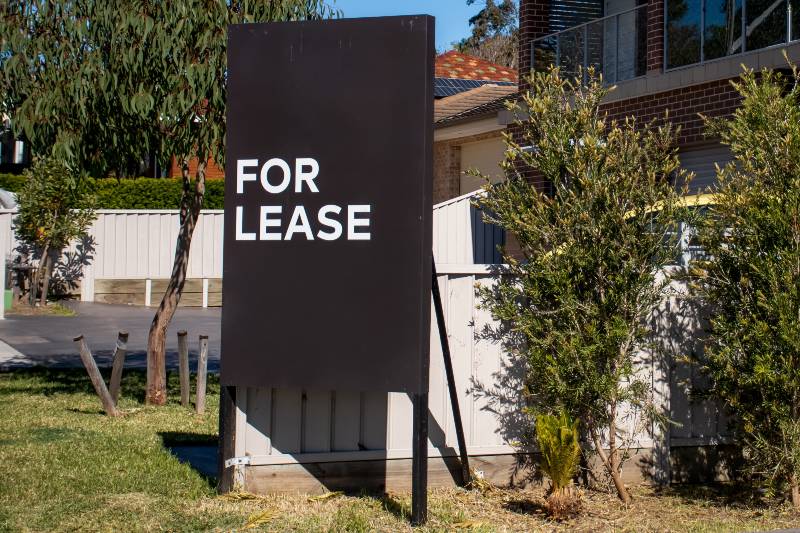As a business owner, negotiating a favorable commercial lease is crucial to your success. With the right strategies and guidance, you can secure the best possible terms for your company. As a seasoned professional in the commercial real estate industry, I, Mike Tolj, have represented countless business owners and landlords in both leasing and sale of commercial properties. With over 18 years of experience, I’ve developed a swift and efficient approach to deal-making, helping my clients fulfill their real estate ambitions.
In this comprehensive guide, I’ll share my expertise and insights to help you master the art of commercial lease negotiations. We’ll explore key considerations, strategies, and best practices to ensure you achieve the most favorable outcome for your business. So, let’s dive in and unlock the secrets to successful lease negotiations!
Key Takeaways
- Master the art of negotiating favorable commercial lease terms with expert strategies and tactics
- Understand the essential elements of a commercial lease and how to leverage them to your advantage
- Learn how to adapt to changing market conditions and incorporate sustainability into your lease agreements
Understanding the Commercial Real Estate Market
To effectively negotiate a commercial lease, it’s essential to have a solid understanding of the commercial real estate market. Several factors influence market rates and competition, including:
- Location and accessibility
- Economic conditions and market trends
- Supply and demand dynamics
- Zoning regulations and building codes
Conducting thorough market research and due diligence is crucial to making informed decisions. This involves:
- Analyzing comparable properties and lease rates
- Assessing the financial health and reputation of potential landlords
- Investigating the property’s condition, amenities, and future development plans
- Reviewing local market reports and economic indicators
By leveraging market intelligence, you can identify the best properties and secure the most competitive prices. This knowledge will also help you develop a strong negotiating position and make well-informed decisions throughout the leasing process. Remember, the more you know about the market, the better equipped you’ll be to navigate commercial lease negotiations successfully.
Key Players in Commercial Lease Negotiations
In commercial lease negotiations, understanding the roles and perspectives of the key players is essential. The primary parties involved are:
- Landlords: Property owners who aim to maximize their returns and maintain a stable tenant base. They often have a long-term interest in the property and may prioritize factors such as tenant quality, lease duration, and rental income.
- Tenant reps: Professional advisors who exclusively represent tenants in lease negotiations. They provide expert guidance, market insights, and negotiation support to help tenants secure the best possible terms. Tenant reps prioritize their client’s interests and work to minimize costs and risks.
- Landlord brokers: Agents who represent landlords in lease transactions. They market the property, attract potential tenants, and negotiate on behalf of the landlord. Landlord brokers aim to achieve the highest rental rates and most favorable terms for their clients.
Be cautious of conflicted brokers who claim to represent both landlords and tenants. They may have divided loyalties and may not prioritize your interests. Always work with an experienced and reputable tenant rep who can provide unbiased advice and advocate for your needs throughout the negotiation process.
Essential Elements of a Commercial Lease
To negotiate effectively, it’s crucial to understand the essential elements of a commercial lease. These components form the foundation of your agreement and can significantly impact your business’s bottom line. Let’s explore the key terms you’ll encounter:
- Base rent: The fixed monthly amount paid for the use of the space, excluding any additional expenses.
- Negotiate for a competitive base rent based on market rates and your business’s needs
- Consider rent escalation clauses that specify how the base rent may increase over time
- Explore free rent periods or discounts to offset initial costs
- Operating expense (OPEX) pass-throughs: Additional costs associated with maintaining and operating the property, such as utilities, property taxes, and insurance.
- Understand which expenses are included and how they are calculated
- Negotiate caps or limits on OPEX increases to control future costs
- Seek transparency and the right to audit OPEX statements
- Tenant improvements and allowances: Modifications or upgrades made to the space to suit your business’s needs.
- Negotiate a tenant improvement allowance (TIA) to offset construction costs
- Clarify who is responsible for overseeing and completing the improvements
- Ensure the lease specifies the scope and quality of the improvements
- Load factor and rentable square footage: The total rentable area, including your exclusive space and a portion of the common areas.
- Understand how the load factor is calculated and its impact on your rental costs
- Verify the accuracy of the rentable square footage measurements
- Negotiate a fair and transparent load factor based on industry standards (e.g., BOMA)
- Lease term and flexibility: The duration of the lease and options for renewal or termination.
- Assess your business’s long-term needs and growth plans
- Negotiate a lease term that balances stability and flexibility
- Include options to renew, expand, or terminate the lease based on your business’s evolving requirements
- Common area maintenance (CAM) fees: Charges for maintaining and repairing shared spaces, such as lobbies, elevators, and parking lots.
- Understand what services are included in CAM fees and how they are calculated
- Negotiate caps or limits on CAM fee increases to control future costs
- Ensure the lease specifies the landlord’s responsibilities and service level commitments
By thoroughly understanding and negotiating these essential lease elements, you can create a solid foundation for your tenancy and protect your business’s interests in the long run.
Negotiation Strategies and Tactics
Negotiating a commercial lease requires careful planning, strategic thinking, and effective communication. Here are some key strategies and tactics to help you achieve the best possible outcome:
A. Preparing a strong negotiating position
- Conducting thorough due diligence:
- Research the property, landlord, and market conditions
- Identify your business’s specific needs and requirements
- Develop a clear understanding of your budget and financial limitations
- Submitting requests for proposal (RFPs):
- Prepare a detailed RFP outlining your space requirements, desired lease terms, and any special considerations
- Distribute the RFP to multiple potential landlords to create competition and gather comparable offers
- Use the RFP responses to assess your options and identify the most suitable properties
- Obtaining a letter of intent (LOI):
- Once you’ve identified your preferred property, submit an LOI to the landlord
- The LOI should summarize the key terms and conditions of the proposed lease, including rent, lease duration, and tenant improvements
- Use the LOI as a starting point for further negotiations and to ensure both parties are aligned on the essential elements
B. Creating competition among landlords
- Identify multiple suitable properties and engage with their landlords simultaneously
- Leverage the competing offers to negotiate more favorable terms and concessions
- Demonstrate your value as a tenant by highlighting your business’s stability, growth potential, and credit strength
C. Analyzing lease proposals and counteroffers
- Reviewing complex clauses and fine print:
- Carefully examine all lease provisions, including renewal options, termination rights, and subletting clauses
- Engage legal counsel to help you understand the implications of complex legal language
- Negotiate modifications to ensure the lease aligns with your business’s needs and protects your interests
- Calculating net present value (NPV) and total cost of occupancy:
- Use financial modeling tools to compare lease proposals based on their long-term costs and benefits
- Consider factors such as rent escalations, operating expenses, and tenant improvement allowances
- Negotiate terms that optimize your cash flow and minimize your overall occupancy costs
D. Negotiating favorable lease terms and concessions
- Rent abatement and free rent periods:
- Negotiate for rent abatement or free rent periods to offset initial move-in costs and improve cash flow
- Consider longer rent abatement periods for longer lease terms or in exchange for other concessions
- Tenant improvement allowances:
- Negotiate a generous TIA to minimize your out-of-pocket expenses for space modifications
- Ensure the TIA is sufficient to cover the desired scope of work and quality of finishes
- Explore options for amortizing the TIA over the lease term to reduce upfront costs
- Renewal and expansion options:
- Secure the right to renew your lease at predetermined rates and terms
- Negotiate expansion options to accommodate future growth without the need for relocation
- Include rights of first refusal on adjacent spaces to ensure flexibility and control over your leased premises
Achieving a win-win outcome
- Approach negotiations with a collaborative and transparent mindset
- Seek to understand the landlord’s objectives and constraints
- Explore creative solutions that address both parties’ needs and create long-term value for your business and the landlord
By employing these strategies and tactics, you can navigate the negotiation process with confidence and achieve a favorable lease agreement that sets your business up for success.

Technology and Tools in Commercial Lease Negotiations
In today’s digital age, technology, and tools play an increasingly important role in commercial lease negotiations. Here are some key ways to leverage these resources:
Leveraging proprietary tools and software
- Utilize customer relationship management (CRM) software to track and manage interactions with landlords and brokers
- Employ lease administration and accounting systems to streamline financial analysis and reporting
- Use virtual tour and space visualization tools to explore and evaluate properties remotely
Utilizing apps and smart technology in leased spaces
Smart locks and remote access
- Implement smart lock systems to enhance security and control access to your leased premises
- Enable remote access capabilities for employees, visitors, and service providers
- Integrate access control with your company’s IT systems for seamless management
Smart thermostats and energy management
- Install smart thermostats to optimize energy consumption and reduce utility costs
- Monitor and adjust temperature settings remotely to ensure comfort and efficiency
- Utilize energy management software to track usage patterns and identify savings opportunities
Sensor-based technologies and privacy concerns
- Consider implementing sensor-based technologies, such as occupancy sensors and asset tracking systems, to optimize space utilization and improve operational efficiency
- Be mindful of potential privacy concerns associated with data collection and monitoring
- Develop clear policies and communicate transparently with employees and stakeholders regarding the use of sensor-based technologies
By embracing technology and tools in your commercial lease negotiations and ongoing property management, you can streamline processes, enhance decision-making, and create a more efficient and productive work environment for your business.
Legal and Financial Considerations
Navigating the legal and financial aspects of commercial lease negotiations is crucial to protecting your business’s interests and minimizing risks. Here are some key considerations to keep in mind:
Understanding and negotiating complex lease clauses
- Engage an experienced real estate attorney to review and interpret lease clauses
- Pay close attention to provisions related to default, remedies, indemnification, and liability
- Negotiate modifications to ensure clarity, fairness, and alignment with your business’s needs
Ensuring accuracy and fairness in square footage calculations
- Understand the different methods for measuring square footage, such as rentable square feet (RSF) and usable square feet (USF)
- Verify the accuracy of the landlord’s measurements and calculations
- Negotiate adjustments if discrepancies or inconsistencies are identified
Navigating legal claims and disputes
- Include provisions for dispute resolution, such as mediation or arbitration, to avoid costly and time-consuming litigation
- Clearly define each party’s rights, obligations, and remedies in case of a breach or default
- Maintain detailed records and documentation to support your position in case of a dispute
Mitigating financial risks and maximizing returns
- Conduct thorough financial due diligence on the property and landlord
- Assess the potential impact of lease obligations on your business’s cash flow and profitability
- Negotiate terms that optimize your financial performance and minimize exposure to market fluctuations
By proactively addressing legal and financial considerations in your commercial lease negotiations, you can create a solid foundation for your tenancy and safeguard your business’s long-term success.
Case Studies and Success Stories
To illustrate the power of effective commercial lease negotiations, let’s explore some real-world examples and success stories:
XYZ Company’s strategic lease renewal
XYZ Company, a growing technology firm, was approaching the end of its lease term in a prime downtown location. With the help of a skilled tenant rep, they:
- Conducted a thorough market analysis to identify comparable properties and rental rates
- Leveraged their strong credit profile and growth potential to negotiate favorable renewal terms
- Secured a 10% reduction in base rent, a generous TIA for space upgrades, and flexible expansion options
- Achieved significant cost savings and laid the foundation for future growth
ABC Retail’s successful lease restructuring
ABC Retail, a popular clothing boutique, faced financial challenges due to the COVID-19 pandemic. To adapt to the changing market conditions, they:
- Proactively engaged their landlord to discuss lease restructuring options
- Proposed a temporary rent deferral and a phased rent escalation plan to align with their recovery timeline
- Negotiated a partial rent abatement in exchange for extending the lease term
- Successfully navigated the crisis and positioned the business for long-term stability
DEF Manufacturing’s strategic relocation
DEF Manufacturing, a growing industrial company, needed to expand its operations and modernize its facilities. Through a comprehensive lease negotiation process, they:
- Identified a suitable property with the necessary infrastructure and amenities
- Negotiated a competitive base rent and a substantial TIA to fund facility improvements
- Secured flexible lease terms with options to renew and expand as the business scaled
- Successfully relocated to a state-of-the-art facility that supported their operational efficiency and growth objectives
These success stories demonstrate the tangible benefits of effective commercial lease negotiations. By working with experienced professionals, conducting thorough due diligence, and employing strategic negotiation tactics, businesses can achieve significant cost savings, secure favorable lease terms, and position themselves for long-term success in their respective markets.

Adapting to Changing Market Conditions
In today’s dynamic business landscape, the ability to adapt to changing market conditions is essential for the success of any commercial tenant. Here are some strategies to help you navigate evolving market dynamics:
Identifying market trends and disruptions
- Regularly monitor key economic indicators, such as GDP growth, employment rates, and industry-specific metrics
- Stay informed about emerging trends, technological advancements, and regulatory changes that may impact your business or industry
- Engage with industry associations, attend conferences, and network with peers to gain insights and perspectives
Adjusting negotiation strategies in response to market changes
- Be proactive in assessing the potential impact of market shifts on your lease arrangements
- Consider renegotiating lease terms in response to significant market disruptions, such as economic downturns or industry-specific challenges
- Explore creative solutions, such as rent deferrals, abatements, or lease restructuring, to align your lease obligations with the changing market realities
Leveraging market conditions to secure favorable lease terms
- Take advantage of market softening or increased vacancy rates to negotiate more favorable lease terms, such as reduced rent or increased concessions
- Be open to alternative leasing models, such as shorter lease terms, flexible space arrangements, or co-working options, to maintain adaptability in uncertain market conditions
- Continuously evaluate your space needs and lease portfolio to identify opportunities for consolidation, relocation, or renegotiation as market conditions evolve
By staying attuned to changing market conditions and adapting your negotiation strategies accordingly, you can position your business to navigate challenges, seize opportunities, and thrive in the face of uncertainty.
Sustainability and Green Leasing
As businesses increasingly prioritize environmental responsibility and sustainability, incorporating green leasing practices into commercial lease negotiations has become more important than ever. Here’s how you can integrate sustainability into your leasing strategy:
Incorporating sustainability clauses into lease agreements
- Include provisions that encourage or require sustainable practices, such as energy efficiency, water conservation, and waste reduction
- Specify the use of environmentally friendly materials and products in tenant improvements and property maintenance
- Incorporate green building certifications, such as LEED or BREEAM, into the lease requirements
Negotiating green building certifications and energy-efficient upgrades
- Work with the landlord to identify opportunities for energy-efficient upgrades, such as LED lighting, HVAC optimization, and renewable energy installations
- Negotiate the allocation of costs and benefits associated with these upgrades, such as utility savings or rebates
- Collaborate with the landlord to achieve and maintain green building certifications that demonstrate your commitment to sustainability
Benefits of sustainable leasing for tenants and landlords
- Reduced operating costs through energy and resource efficiency
- Improved indoor environmental quality and employee well-being
- Enhanced corporate social responsibility and brand reputation
- Increased property value and marketability for landlords
- Contribution to global sustainability efforts and climate change mitigation
By incorporating sustainability and green leasing practices into your commercial lease negotiations, you can create a more environmentally responsible and efficient workplace while realizing long-term economic and social benefits for your business and the broader community.
Best Practices for Tenants
To ensure a successful outcome in your commercial lease negotiations, consider the following best practices:
Partnering with experienced tenant reps
- Engage a reputable and experienced tenant rep who specializes in your market and property type
- Leverage their expertise, market knowledge, and negotiation skills to achieve the best possible lease terms
Maintaining clear communication and documentation
- Establish open and transparent communication channels with the landlord and all involved parties
- Document all discussions, agreements, and amendments in writing to avoid misunderstandings and ensure accountability
Staying informed and adaptable throughout the negotiation process
- Keep abreast of market trends, comparable lease transactions, and industry benchmarks
- Be flexible and open to creative solutions that address the needs and constraints of both parties
- Continuously assess and adjust your negotiation strategy based on new information and changing circumstances
By following these best practices and partnering with trusted professionals, you can navigate the complex world of commercial lease negotiations with confidence and achieve a successful outcome for your business
FAQs
How long does the commercial lease negotiation process typically take?
The duration of the commercial lease negotiation process can vary depending on factors such as the complexity of the lease, the size of the space, and the responsiveness of the parties involved. On average, the process can take anywhere from a few weeks to several months. It’s important to start the process early and allow sufficient time for thorough due diligence, negotiations, and legal review.
What are some tips for negotiating a commercial lease?
Some tips for negotiating a commercial lease include researching market rates, understanding your needs, negotiating lease terms, and seeking professional help if needed.
How can I negotiate a fair lease deal for a new car?
To negotiate a fair lease deal for a new car, research the car’s value, understand lease terms, negotiate the capitalized cost, and pay attention to additional fees.
Is it possible to negotiate a net lease contract?
Yes, it is possible to negotiate a net lease contract. Terms like rent structure, renewal options, and maintenance responsibilities can be negotiated in a net lease agreement.
What are some top tips for negotiating a car lease?
Top tips for negotiating a car lease include knowing your credit score, understanding the lease agreement, researching leasing specials, negotiating the purchase price, and considering lease-end options.
Should I sign a real estate lease without negotiating the terms?
It is not advisable to sign a real estate lease without negotiating the terms. Negotiating can help you secure better lease terms and conditions that suit your needs.
What are some tips for negotiating a commercial lease?
Some tips for negotiating a commercial lease include conducting thorough research on comparable lease rates in the area, understanding all the terms and clauses in the lease contract, being prepared to negotiate on certain terms, and seeking the help of a real estate professional.
Conclusion
Mastering the art of commercial lease negotiations is essential for any business looking to secure the best possible terms and create a solid foundation for long-term success. By understanding the key elements of a lease, employing strategic negotiation tactics, and staying attuned to market conditions and sustainable practices, you can create a lease agreement that aligns with your business’s needs and goals.
As a seasoned professional in the commercial real estate industry, I, Mike Tolj, am committed to helping business owners and landlords navigate the complexities of lease negotiations. With my expertise and dedication, I can guide you through the process and help you achieve the most favorable outcomes for your business.
If you’re ready to take your commercial lease negotiations to the next level, I invite you to schedule a consultation with me. Together, we can assess your unique needs, develop a tailored strategy, and work towards securing the best possible lease terms for your business.
Don’t leave your commercial leasing success to chance – partner with an experienced professional who has your best interests at heart. Contact me today to schedule your consultation and take the first step toward mastering your commercial lease negotiations.




